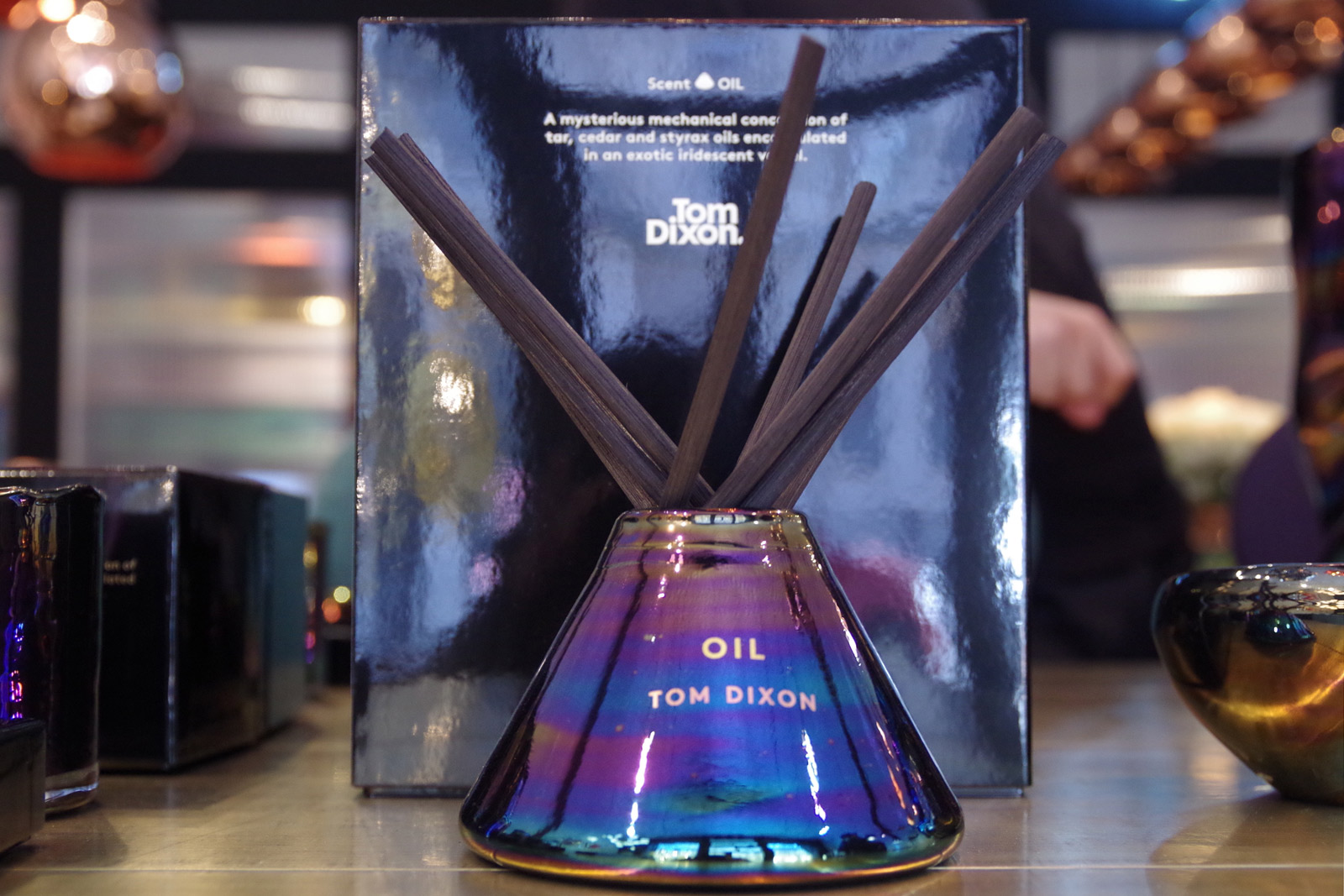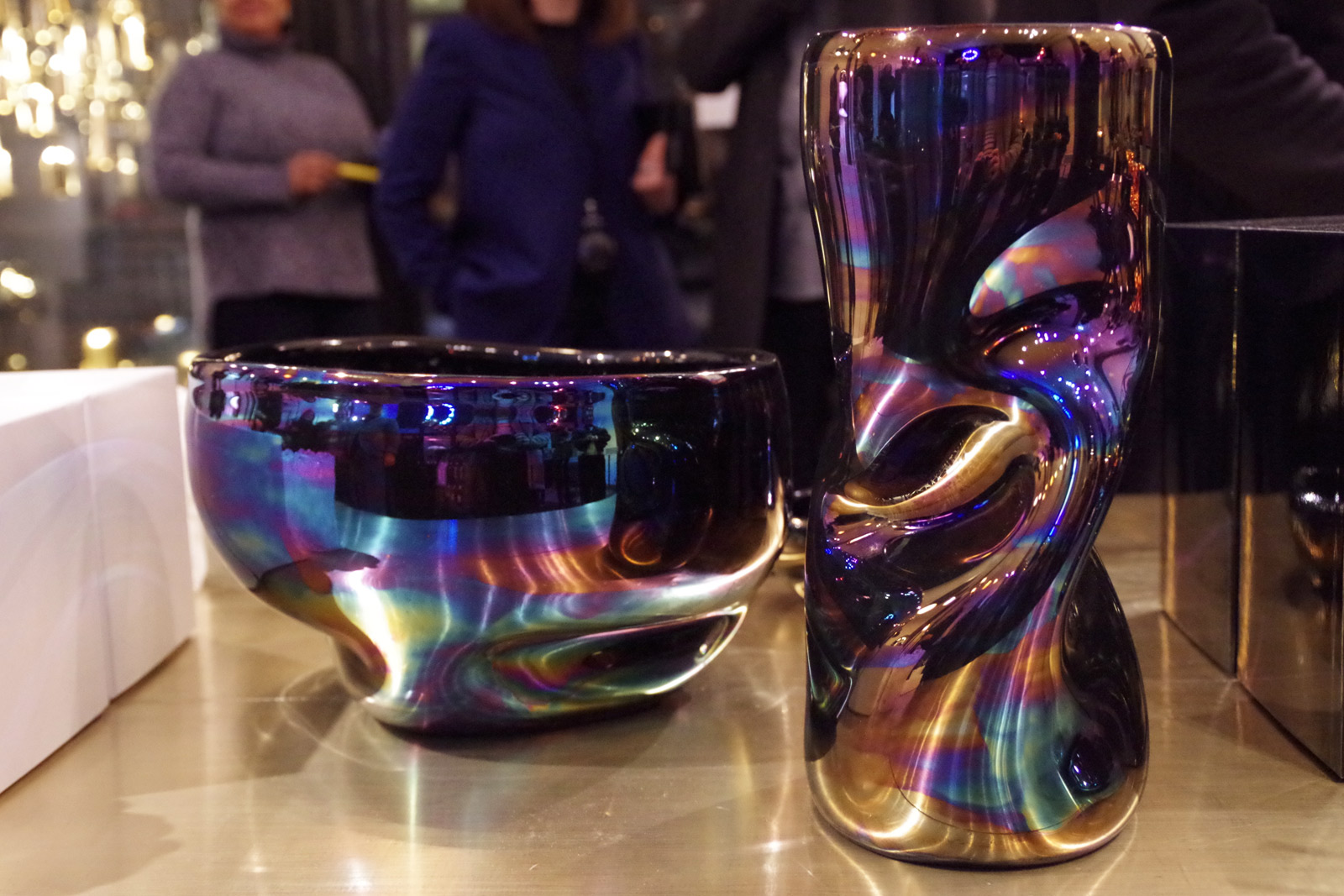Interview: Tom Dixon
Discussing the future of shapes, scents and materials with the acclaimed designer

In the bustle of his SoHo, NYC showroom, among geometric homewares and personality-packed light fixtures, we sat down with the affable visionary Tom Dixon to talk about the future. The designer was present to preview his Spring 2016 collection—an array of candles and candleholders, copper cups and glasses and a new iridescent finish that appears on a handful of products. Once again, all of the pieces are recognizably Dixon, and yet there are many new, refreshing nuances even to his simplest design objects. In order to best understand Dixon’s longterm vision, we spoke about shapes, materials and the impact of scent.

What can people expect from this new collection materials-wise?
I’ve been interested in metallic finishes for a long time. We’ve done quite a job in promoting copper and the copper industry. [laughs] But, I’ve been interested in metallic colors generally. Here, we hit on this iridescence that we’ve been looking into for quite a while, but struggling to get anything that’s convincing from using paints or color changing materials. Now we have a convincing glass finish, which we are showing for the first time in the world, right here in New York. Although, it’s not a big launch, it’s a preview of Maison & Objet—one of our two biggest showcases, with the other being Milan.
And why are you releasing it now?
In a way, we are keen on building an international infrastructure, rather than a London-based brand showing in Paris and Milan. America is increasingly important. We have so many things coming out. It’s just mad to do it all when everyone is shouting really loud. It’s nicer to come off-season and separate out some of our subjects. Otherwise, we are talking about lighting and structures, finishes and materials at once.

You cover a lot of design verticals already. What more are you looking to take on?
We are a product company but we’ve got a reasonably strong interior design component within the business. The more you get involved with the color of things, the shape of them, the comfort, you start realizing that the other bits are irritating to you: the acoustics of a place, or the smell of a place. They may have a bigger impact on your experience than the visuals. I’m interested more and more in trying to effect the whole of the experience and the intangibles.
Then how does one go about impacting all these intangibles?
I think it’s one of those things that you learn, like with lighting—the lampshade might be visible and tangible but the effect is something people feel nervous about. It takes a lot of time to learn about sources and its resonance. A lot of people do not think about all of this a lot, because not everyone can pick up on light quality—or the quality of smells—but it’s just the same. You must have an opinion. The more you make products, the greater your opinion can be. With smells, it’s most confusing. You walk into a perfume department and you’re confronted with hundreds of different scents all near or in the same container. There’s too much choice. It’s about simplifying the choices and weaving a narrative about them.

You’ve been very successful at taking shapes that are familiar to everyone and presenting them in a way people perceive as new. How is this achieved?
You’ve seen through my trick! [laughs] I’ve never been asked that before. I don’t know. I’m not inventing anything new, but quite a lot of work goes into getting things as simple and correct as possible. A lot of work goes into proportion and has to do with surfaces, in general. We are now in a position to present things in a bigger collection, across many categories, so you can spot that appear more frequently. We are able to use shapes in a broader way. I spend a lot of time trying to get the junior designers in my organization to remove stuff because there needs to be restraint.
How much time is spent doing research and development on materials?
As opposed to developing my simple shapes? [laughs] It is increasingly about the patchy day that I have. We travel a lot. A lot of these materials come from developments in factories or manufacturing techniques. We have a close relationship with the factories that we use, all over the world. I spend a lot of time traveling the world visiting the places where we get things made. That for me is the research. While we have a studio where we make things, I prefer to produce things in full size from the start with as close to the final material as possible.
The studio goes from the idea to the communication and packaging of that idea and even the warehousing and distribution—all ourselves.
Altogether, though, I reckon about 20-25% of my time is spent on research. It’s really all about our process. The studio goes from the idea to the communication and packaging of that idea and even the warehousing and distribution—all ourselves. And all of that requires research. The research might even be in the narrative of the object or how you transport it from place A to B, rather than just the form or function of it. It’s very challenging being involved in the bit that most designers don’t get involved with—the commerce and the sales. Even these areas can be rethought and re-created.

Does a product strike first, or does a category, when you are venturing into new territory?
I think we’ve got a plan, although slightly chaotic, but it’s born from my even broader experience as a designer. I think the next sector will be textiles or ceramics. We go often by material groups and sourcing. We have to because that’s the first problem we can encounter. I can have an idea, but if I don’t know how to make it at the right price where I can then sell it, then it’s pointless. There’s that constraint and then the distribution constraint. I’ve dabbled in many materials, but like I said, textiles could be next. I’ve been manly involved in resistant materials, things that you cut and bend and fold. But textiles are the complete opposite. They’re soft materials that you have to give structure to.
The Tom Dixon Spring 2016 collection will be available in-store and online starting 1 February 2016.
Images by Cool Hunting












